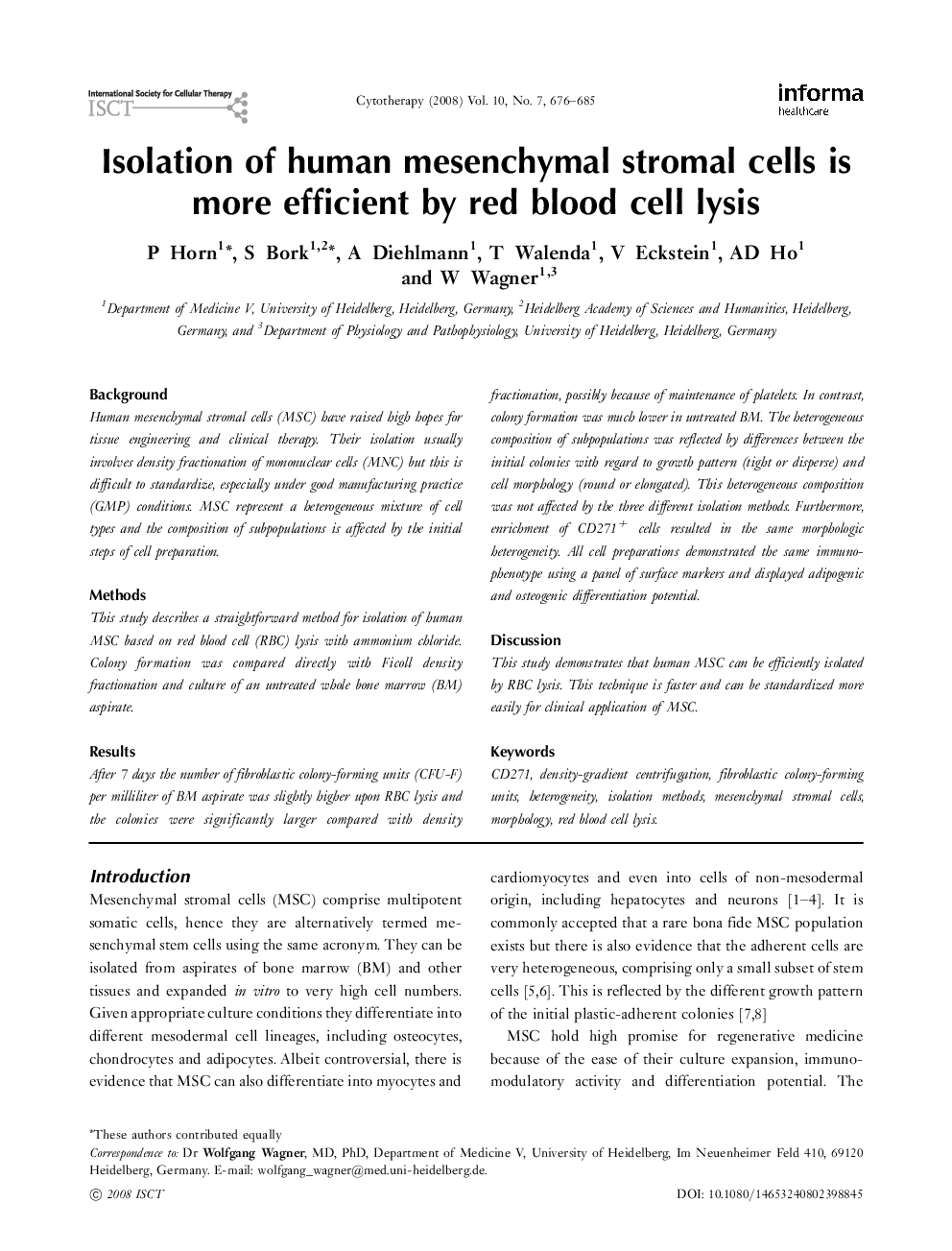| Article ID | Journal | Published Year | Pages | File Type |
|---|---|---|---|---|
| 2172417 | Cytotherapy | 2008 | 10 Pages |
BackgroundHuman mesenchymal stromal cells (MSC) have raised high hopes for tissue engineering and clinical therapy. Their isolation usually involves density fractionation of mononuclear cells (MNC) but this is difficult to standardize, especially under good manufacturing practice (GMP) conditions. MSC represent a heterogeneous mixture of cell types and the composition of subpopulations is affected by the initial steps of cell preparation.MethodsThis study describes a straightforward method for isolation of human MSC based on red blood cell (RBC) lysis with ammonium chloride. Colony formation was compared directly with Ficoll density fractionation and culture of an untreated whole bone marrow (BM) aspirate.ResultsAfter 7 days the number of fibroblastic colony-forming units (CFU-F) per milliliter of BM aspirate was slightly higher upon RBC lysis and the colonies were significantly larger compared with density fractionation, possibly because of maintenance of platelets. In contrast, colony formation was much lower in untreated BM. The heterogeneous composition of subpopulations was reflected by differences between the initial colonies with regard to growth pattern (tight or disperse) and cell morphology (round or elongated). This heterogeneous composition was not affected by the three different isolation methods. Furthermore, enrichment of CD271+ cells resulted in the same morphologic heterogeneity. All cell preparations demonstrated the same immunophenotype using a panel of surface markers and displayed adipogenic and osteogenic differentiation potential.DiscussionThis study demonstrates that human MSC can be efficiently isolated by RBC lysis. This technique is faster and can be standardized more easily for clinical application of MSC.
